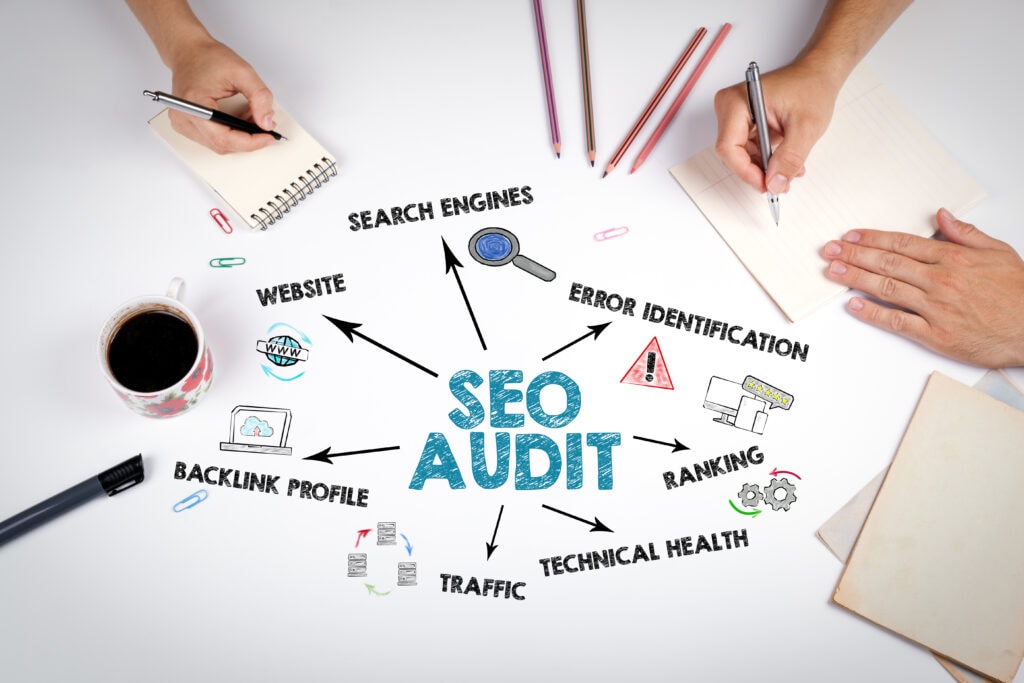Top B2B SEO Tips for 2025: Boost Your Search Rankings
B2B SEO is essential for businesses wanting to connect with other businesses online. The longer buying cycles and multiple decision-makers in B2B transactions call for specific SEO strategies. This article will guide you through keyword research, content creation, technical SEO, and link building tailored for B2B markets.
Key Takeaways
A robust B2B SEO strategy involves understanding buyer personas, conducting thorough keyword research, and optimizing on-page elements to enhance visibility and lead generation.
Employing SEO tools and analyzing competitor keywords are essential for developing an effective keyword strategy, allowing businesses to tailor content to their audience’s needs and stay competitive.
Monitoring and adjusting SEO strategies based on key performance indicators (KPIs) ensures that efforts remain aligned with business objectives and continually improve search engine rankings.
Understanding B2B SEO

SEO in B2B marketing is a vital tool for businesses seeking to attract and retain customers. Effective SEO boosts visibility, elevating the perceived stature of B2B companies. The B2B buying process is typically longer and more complex than B2C, involving multiple stakeholders and detailed research before making purchasing decisions. This complexity necessitates a tailored approach to SEO, focusing on both brand visibility and lead generation.
A robust B2B SEO strategy includes mastering the basics, creating targeted content, and building a strong backlink profile. Grasping buyer personas is key to creating marketing strategies that resonate with B2B customers. Tailoring online messaging to these personas ensures websites remain accessible, usable, and reliable, improving conversion rates. Targeting multiple personas within the same company complicates SEO efforts, necessitating a nuanced approach.
B2B SEO focuses on making valuable content accessible to potential customers, not just gaming search engine algorithms. Key components of a successful B2B SEO strategy are keyword-rich content, quality backlinks, and targeted content development. Focusing on relevant keywords and creating content that addresses your audience’s unique challenges can significantly improve search rankings and establish your business as an industry thought leader.
Conducting Thorough Keyword Research
Keyword research forms the backbone of any successful B2B SEO strategy. It reveals what your target market is searching for, enabling you to tailor content to meet their needs and drive organic traffic. Effective keyword research targets bottom-of-the-funnel keywords signaling buying intent and high-value, low-volume keywords that, despite lower search volumes, reflect search intent and are highly valuable.
Knowing your audience is crucial in keyword research. Incorporating buyer personas aids in selecting relevant keywords. This ensures your content resonates with your audience and meets their needs at various stages of the buying process.
Keyword research is an ongoing process requiring regular updates and adjustments to stay relevant and effective.
Using SEO Tools for Keyword Research
SEO tools are crucial for conducting keyword research and understanding audience search behavior. Tools like Ahrefs, Google Search Console, and other keyword research tools provide insights into search volumes, related terms, and current rankings. Exporting data on ranked keywords, URLs, positions in SERPs, and search volumes helps refine your keyword strategy and optimize landing pages.
These tools help identify relevant keywords that align with your business objectives and audience needs. SEO tools can also discover related search terms from resources like Wikipedia, enhancing your keyword research.
This comprehensive approach grounds your SEO efforts in data, focusing on measurable results.
Analyzing Competitor Keywords
Analyzing competitor keywords can reveal successful strategies and high-traffic opportunities. Exporting competitor keyword data allows for a structured analysis of their ranking strategies and content performance. This information helps understand the competitive landscape and refine your keyword strategy to gain an edge in rankings.
Competitor keyword analysis uncovers gaps in your content and identifies opportunities to better meet your audience’s needs. Thorough competitive analysis ensures your keyword strategy is effective and aligned with market demands.
On-Page SEO Techniques

On-page SEO focuses on optimizing elements directly on your website’s pages. This enhances search engine rankings. It includes optimizing visible webpage elements like product descriptions, titles, and content for targeted keywords. Effective on-page optimization improves search rankings and enhances user experience through clear, intuitive navigation.
Interlinking demonstrates the semantic relationship between topics to search engines, improving SEO. Pillar pages and topic clusters effectively prompt users to explore related topics through internal links, boosting engagement and SEO performance.
The following subsections will delve deeper into optimizing meta descriptions and title tags, implementing structured data markup, and enhancing internal links.
Optimizing Meta Descriptions and Title Tags
Meta descriptions and title tags are vital for improving click-through rates on search results. Using relevant keyword phrases in titles and meta descriptions significantly enhances their appeal and engagement. Meta descriptions should be concise, around 158 characters for desktop and 120 for mobile, effectively conveying necessary information.
Incorporating numbers, statistics, or emotional triggers in titles and descriptions can enhance their appeal. Unique titles and descriptions for each page prevent duplication and improve individual rankings.
Tools like the Yoast SEO plugin can track the effectiveness of title tags and meta descriptions, ensuring they meet length and keyword criteria.
Implementing Structured Data Markup
Structured data markup aids search engines in understanding the content and context of your webpages. Using structured data markup improves search engine interpretation of your content, enhancing visibility in search results.
This enhanced understanding boosts search engine optimization performance by ensuring accurate representation and easy accessibility to search engine algorithms.
Enhancing Internal Links
Strategically placed internal links enhance user navigation and establish the importance of related content. Connecting related content through internal links guides users through your website, enhancing overall user experience. This can reduce bounce rates and increase engagement, contributing to better search engine rankings.
Internal linking helps search engines understand your content’s structure and hierarchy, improving indexing and ranking. Focusing on internal link building creates a comprehensive and cohesive website structure that supports SEO efforts and enhances user satisfaction.
Technical SEO Best Practices

Technical SEO optimizes the structural components of a website to enhance its search engine friendliness. It includes performing a technical SEO audit to identify and fix issues that may hinder search engine crawling and indexing. Core Web Vitals, including Largest Contentful Paint (LCP), First Input Delay (FID), and Cumulative Layout Shift (CLS), are crucial user experience signals impacting SEO.
Meeting these technical standards can significantly improve search engine rankings and user experience. The following subsections will cover the steps to perform a technical SEO audit, tips for improving site speed, and the importance of ensuring mobile friendliness.
Performing a Technical SEO Audit
A technical SEO audit identifies and rectifies issues that may hinder search engine crawling and indexing. Tools like Screaming Frog SEO Spider and Google Search Console are recommended for analyzing your website’s technical aspects. Ahrefs is another comprehensive tool for monitoring backlink profiles, keyword rankings, and overall SEO health.
During the audit, check for broken links, fix duplicate content issues, and ensure your website has an XML sitemap to aid search engines in crawling effectively.
Enhancing site security with an SSL certificate and using HTTPS can improve search rankings. Testing functionality and usability on different devices ensures a mobile-friendly design.
Improving Site Speed
Site speed is a critical ranking factor, vital for improving user experience and search engine rankings. Effective ways to improve site speed include using fast hosting, minimizing HTTP requests, consolidating to a single CSS stylesheet, using small image files, compressing web pages, and minifying code.
Optimize media for fast loading by adjusting image sizes, utilizing caching, and minimizing heavy scripts. Tools like PageSpeed Insights test site speed optimization and identify areas for improvement.
Focusing on these aspects ensures your website loads quickly, providing a seamless user experience and improving search engine performance.
Ensuring Mobile Friendliness
Mobile-friendliness is critical for SEO as it greatly influences search engine rankings. Responsive design adjusts layout and navigation for easy access on any device, enhancing user experience. Ensuring mobile-friendliness improves user satisfaction and reduces bounce rates, contributing to better search engine rankings.
Implementing responsive design and testing functionality on various devices are essential for achieving mobile-friendliness. Prioritizing mobile usability caters to the growing number of mobile users and improves overall SEO performance.
Creating High-Quality Content

High-quality content is the cornerstone of a successful B2B SEO strategy. B2B content must address the specific needs of professional audiences at various stages of the buying journey. Quality content creation enhances brand visibility, builds loyalty, drives organic traffic, and positions the business as a thought leader. Consistency in quantity and quality is vital for effective B2B SEO.
Optimizing landing pages for SEO aims to convert users and drive sales through targeted keywords in content and meta tags. On-page SEO focuses on content affecting page ranking, including keywords, user experience, titles, and meta descriptions.
The following subsections will discuss developing a content strategy and crafting pillar pages and topic clusters.
Developing a Content Strategy
Aligning content strategy with keyword research ensures content reaches and resonates with the right audience. Mapping researched keywords to sales funnel sections increases the value of the strategic plan. Data for developing buyer personas includes customer interviews, sales team feedback, and market research covering demographics, job roles, and business needs.
A model for prioritizing content should consider relevance, potential traffic, internal business objectives, and timeliness. Developing a quantitative model for content production optimizes time and justifies decisions to stakeholders.
Incorporating SEO enhances the authority and credibility of a business online. Social media can enhance the visibility of content, increasing the chances of earning backlinks from interested parties.
Crafting Pillar Pages and Topic Clusters
Pillar pages should serve as comprehensive resources on a topic, linking to more detailed cluster content. These pages act as the central hub, providing an overview and linking to more specific articles that delve deeper into subtopics. Incorporating images, videos, and infographics in pillar pages can enhance engagement and make the content more accessible.
Each cluster page should focus on answering specific queries while linking back to the relevant pillar page for enhanced SEO. This clear linking structure between pillar and cluster content improves user navigation and boosts page authority. Cluster content should target specific, bottom-of-the-funnel keywords to better meet user intent, supporting the overarching content strategy.
Building Quality Backlinks
Building quality backlinks is essential for SEO as they serve as endorsements that contribute to your domain authority and establish your brand’s credibility. A strong backlink profile builds trust with search engines, signaling authority and improving your rankings. Prioritizing quality over quantity is crucial as low-quality backlinks can negatively affect your perception and SEO efforts.
Effective strategies for acquiring quality backlinks include leveraging high-traffic websites, creating valuable content, and using outreach techniques. The following subsections will discuss guest posting and leveraging social media marketing to build quality backlinks.
Guest Posting
Creating insightful, actionable content is crucial when writing guest posts to engage the audience and provide value. Identifying suitable sites for guest blogging can be done using keyword research tools to find those that cover similar topics. Guest posting can foster professional relationships, establish brand authority, and drive qualified traffic to your website.
Guest posting is an effective method for building valuable backlinks and enhancing brand credibility. By contributing to reputable sites, you can increase your visibility and attract more organic traffic to your website.
Leveraging Social Media Marketing
SEO complements various digital marketing efforts such as social media and content marketing. Social media marketing plays a crucial role in enhancing SEO by increasing content visibility. Engaging social media content can generate backlinks as others share and reference it. Leveraging social media marketing effectively can lead to improved search engine rankings through enhanced backlink profiles and increased traffic.
By integrating social media marketing into your overall SEO strategy, you can amplify your reach, engage with your target audience, and drive more leads to your website.
Monitoring and Measuring SEO Performance
Monitoring and measuring SEO performance is essential to ensure your strategies are effective and yielding results. SEO contributes to generating 34% of all qualified leads for businesses, making it a significant driver of lead generation. Key performance indicators (KPIs) for measuring SEO success include organic traffic, keyword rankings, click-through rates, backlink growth, and conversion rates.
Tracking these KPIs helps in making data-driven decisions and optimizing your SEO strategy. Regularly reviewing KPIs, at least monthly or quarterly, enables timely adjustments to strategies and tactics.
The following subsections will discuss using analytics tools and adjusting strategy based on KPIs.
Using Analytics Tools
Key tools for monitoring SEO performance include Google Analytics, Google Search Console, Ahrefs, and Semrush. Using these analytics tools is crucial for effectively monitoring SEO performance and making informed decisions. They help identify areas for improvement, track progress over time, and enhance the overall SEO strategy.
With these tools, you can monitor essential metrics such as organic traffic, keyword rankings, and click-through rates. By analyzing this data, you can gain insights into your SEO performance and make necessary adjustments to optimize your efforts.
Adjusting Strategy Based on KPIs
SEO Key Performance Indicators (KPIs) should be reviewed monthly or quarterly to ensure they remain aligned with business objectives. A data-driven approach benefits SEO strategy by aligning it with search engine algorithms and ensuring adaptation to changes in business needs and audience behavior. If there is a high bounce rate for certain pages, it is essential to take a closer look at those pages to identify and implement necessary improvements.
By regularly reviewing and adjusting your SEO strategy based on KPI analysis, you can ensure that your efforts are effective and continuously optimized for better performance.
Integrating SEO with Overall Digital Marketing Strategy

Effective B2B SEO strategies can significantly enhance brand awareness and conversions. SEO can yield a high return on investment due to its long-term effectiveness in generating leads. A well-defined content strategy should align with the specific questions and pain points of the target audience. Brand-building content is essential as it educates, engages, and communicates core values to the audience.
Sharing SEO-optimized content enhances audience engagement and fosters loyalty. A crucial goal of B2B SEO services is establishing the brand’s position as a thought leader in its industry. A consistent narrative across platforms amplifies SEO effectiveness and strengthens brand identity.
Integrating SEO with your overall digital marketing strategy ensures that all efforts are aligned and working towards common goals. This cohesive approach maximizes the impact of your SEO efforts and supports broader business objectives.
Summary
In conclusion, a successful B2B SEO strategy in 2024 involves a holistic approach that includes thorough keyword research, effective on-page and technical SEO techniques, high-quality content creation, and building quality backlinks. Monitoring and measuring SEO performance is crucial to ensure your strategies are effective and yielding results.
By integrating SEO with your overall digital marketing strategy, you can enhance brand awareness, drive organic traffic, and establish your business as a thought leader in your industry. Implementing these strategies will help you stay ahead of the competition and achieve your business goals.
Frequently Asked Questions
Why is B2B SEO important in 2024?
B2B SEO is essential in 2024 as it significantly boosts visibility and drives organic traffic, enabling businesses to attract and retain customers in a competitive landscape. This strategic approach is vital for maintaining relevance and achieving growth.
What are the key components of a successful B2B SEO strategy?
A successful B2B SEO strategy comprises thorough keyword research, targeted content development, quality backlinks, on-page optimization, and continuous performance monitoring. Ensuring these components are effectively executed will enhance your search visibility and engagement significantly.
How can I improve my website’s technical SEO?
Improving your website’s technical SEO can be achieved by conducting a thorough technical SEO audit, enhancing site speed, ensuring mobile-friendliness, and implementing structured data markup. These actions will significantly strengthen your website’s performance in search engines.
What role does content play in B2B SEO?
Content plays a crucial role in B2B SEO by meeting the specific needs of professional audiences, enhancing brand visibility, driving organic traffic, and establishing the business as a thought leader. Quality content is essential for effective search engine optimization in the B2B sector.
How do I build quality backlinks for my B2B website?
To build quality backlinks for your B2B website, focus on guest posting, creating valuable content, leveraging social media marketing, and conducting outreach to high-traffic websites. These strategies will enhance your online credibility and visibility.







